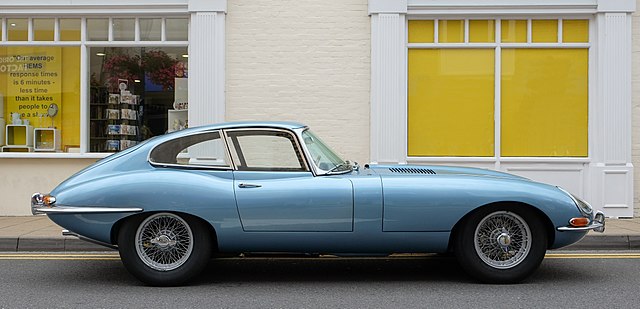
The Jaguar E-Type, produced between 1961 and 1974, is an icon of automotive design and performance. Its unparalleled blend of beauty, high performance, and competitive pricing established the E-Type as a symbol of the 1960s and a staple in classic car collections around the world.
This article delves into the legacy of the Jaguar E-Type, exploring its development, design, performance, legacy, and variations.
Introduction to the Jaguar E-Type

The Jaguar E-Type, also known as the Jaguar XK-E in the North American market, was unveiled at the Geneva Salon in March 1961. It immediately stole the spotlight, praised for its stunning design and specifications that rivaled much more expensive sports cars. Originally, the E-Type was available in two models: a coupe (FHC) and a convertible (OTS).
The roots of the E-Type can be traced back to Jaguar’s D-Type racing cars, which had won the 24 Hours of Le Mans three consecutive years from 1955 to 1957. This racing pedigree influenced the E-Type’s design and engineering, contributing to its outstanding performance and handling.
The E-Type’s debut was so impactful that Enzo Ferrari himself called it “the most beautiful car ever made,” a sentiment echoed by many over the decades.
Design and Aesthetics

The design of the Jaguar E-Type was a major factor in its acclaim. Its long, sleek bonnet, flowing lines, and distinctive headlight design set new standards for sports car aesthetics.
The body was not just about looks; it was aerodynamically efficient, a testament to Jaguar’s experience in motorsport. The car’s monocoque construction, a technique borrowed from aircraft design, also contributed to its rigidity and light weight.
Inside, the E-Type featured a sporty yet luxurious interior, with leather seats, a wood-rimmed steering wheel, and Smiths gauges that exuded classic British sports car charm. The attention to detail and quality of materials used contributed to the E-Type’s allure as both a driver’s car and a luxury item.
Performance and Engineering

At the heart of the Jaguar E-Type’s performance was its 3.8-liter XK straight-six engine, which produced 265 horsepower at its launch. This engine was capable of propelling the E-Type to speeds of up to 150 mph, a remarkable feat for its time.
In 1964, the engine was enlarged to 4.2 liters, increasing torque and making the car more drivable, though without altering the top speed significantly.
The E-Type also featured advanced engineering solutions, including independent rear suspension and disc brakes on all four wheels, which were innovations in the early 1960s. These features not only enhanced the car’s performance but also its safety and handling, allowing it to compete on the racetrack and on the road.
Variations and Evolution

Over its 13-year production run, the E-Type underwent several updates and came in different variants. The Series 1 (1961-1968) is the most coveted by collectors for its purity of design and performance.
The Series 2 (1969-1971) introduced significant changes, including revised lighting and improved cooling, making it more suitable for the American market.
The Series 3 (1971-1974) saw the introduction of a new 5.3-liter V12 engine, offering more power and a refined driving experience, albeit with changes to the body that divided enthusiast opinions.
Special models, including the lightweight E-Type and the Low Drag Coupe, were produced in limited numbers, mainly for racing. These rare models are highly sought after today, showcasing the E-Type’s racing heritage and the high level of engineering that Jaguar invested in its development.
Legacy and Influence
The Jaguar E-Type’s legacy is not just in its beauty or performance but in its influence on automotive design and engineering. It set benchmarks for sports cars that followed, combining aesthetics, high performance, and affordability in a way few had managed before. Today, the E-Type is a revered classic, celebrated in car shows and collections worldwide.
The E-Type’s enduring appeal is also evident in its cultural impact, appearing in films, television shows, and even postal stamps. It remains a symbol of 1960s style and innovation, a testament to Jaguar’s craftsmanship and vision.
The E-Type’s influence extends beyond its own era, inspiring modern cars and reminding us of the golden age of sports car design.
In conclusion, the Jaguar E-Type stands as one of the most important and iconic cars in automotive history. Its blend of beauty, performance, and innovation has left an indelible mark on the automotive landscape, making it a timeless classic that continues to captivate enthusiasts and collectors alike.
